Surgical rhinoplasty, most commonly referred to as a nose job, is one of the most popular, complex, and delicate aesthetic procedures available. However, in today’s fast-paced world, many people are reluctant to commit to this invasive procedure.
The good news is that there is now a non-surgical option available to enhance the overall appearance of the nose. Non-surgical rhinoplasty allows patients to “try out” changes in their noses without being fully committed to the permanent alterations that come with surgery.
Liquid rhinoplasty involves the use of minimally invasive dermal filler products but accomplishes many of the same goals as the surgical alternative. Non-invasive rhinoplasty has significantly increased in popularity recently due to its lower cost, lack of commitment required, and associated minimal downtime.
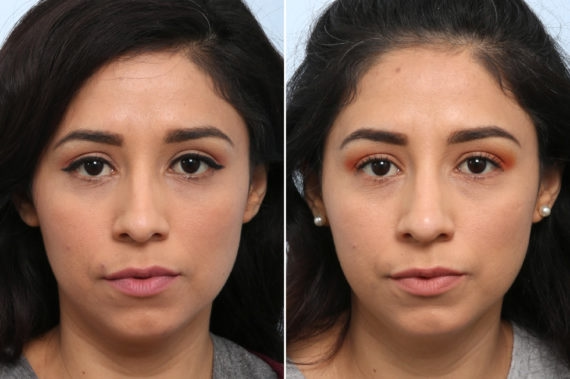
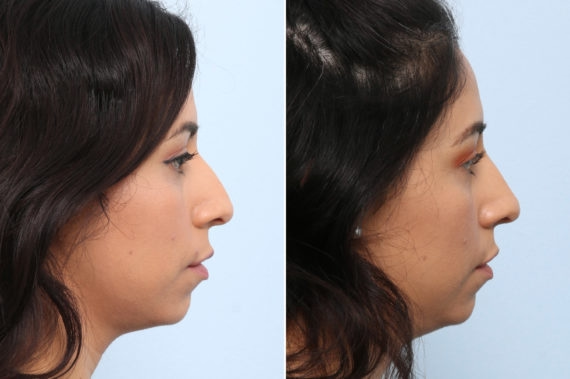
What Does a Non-Surgical Rhinoplasty Involve?
A cosmetic injectable nose job differs from a traditional rhinoplasty in that it utilizes injectable fillers to enhance the nose’s appearance on a temporary basis rather than permanently altering its structure.
Non-surgical nose jobs make use of hyaluronic acid (HA) dermal fillers to create a variety of temporary aesthetic improvements to the nose. This may include correcting one or more of the following defects:
- Bumps
- Dents
- Crookedness
- Drooping
- Upturned nose
- Flat or scooped at the nasal bridge
- Wide, shapeless, or pinched at the tip
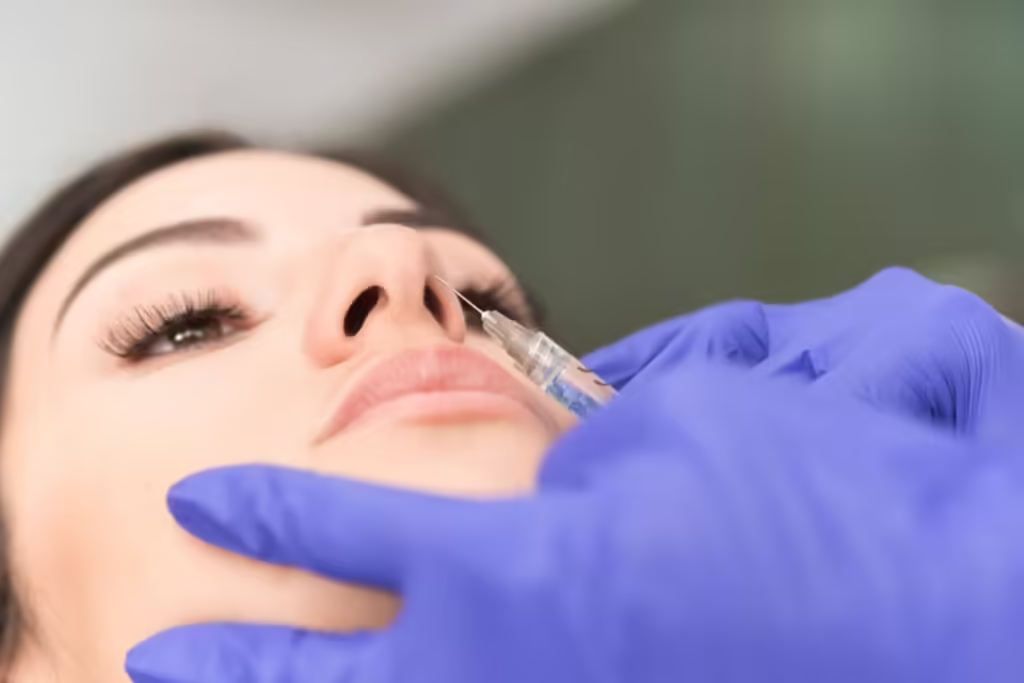
Hyaluronic acid-based dermal fillers are regarded as the most effective, safe, and non-toxic fillers on the market, as they are naturally broken down by the body over time. There are a number of different brands of this type of filler available for liquid nose jobs, such as Juvederm and Restylane.
A topical numbing cream or ice is applied to the nose before the dermal filler is injected into the targeted area. No dressings or bandages are required following the procedure, and patients should have few if any, activity restrictions.
Advantages and Disadvantages of Liquid Rhinoplasty
It’s important to carefully consider whether or not a nonsurgical nose job is the right procedure for your needs. All nose treatments have their benefits, downsides, and limitations.
Here are some pros and cons of liquid rhinoplasty to help you decide if it’s the treatment for you.
The Pros of a Liquid Rhinoplasty
1. Liquid Rhinoplasty is Minimally Invasive
Non-surgical rhinoplasty is a knife-free alternative to the more conventional surgical rhinoplasty. This translates to a minimal recovery time and a decreased risk of complications. Unlike in traditional surgical procedures, the risks are very low with non-invasive rhinoplasty.
2. No Anesthesia is Required for a Liquid Rhinoplasty
The procedure typically does not require anesthesia. Beyond a slight sensation often described as a pinch at the site of injection, it is more or less painless. However, for patients who request it, a topical numbing cream may be applied before the treatment begins.
3. Non-Surgical Nose Jobs Require No Downtime
One of the key benefits of liquid (non-surgical) rhinoplasty is the lack of downtime required. Following the procedure, the patient is able to return to their daily routine with hardly any swelling or bruising. It is usually referred to as a lunchtime treatment because not only is there little to no risk of complications or potential side effects, but the results are instantaneous.
4. Nonsurgical Rhinoplasty is 100% Reversible
This is a major benefit of a nonsurgical nose job – the fact that the results are temporal and can be reversed, thereby eliminating the necessity for revision procedures to correct any potential complications that may arise. This benefit allows patients to try out a new nose and decide if they like it or not. If they don’t, most people simply wait for the hyaluronic acid filler to degrade over time. However, the HA filler can also be dissolved immediately with the help of hyaluronidase injections if necessary.
5. Liquid Nose Jobs Are More Affordable Than Traditional Rhinoplasty
Going in for a nose job surgery can make a sizable dent in your wallet due to the costs of surgical and facility fees, anesthesia, and the cost of taking time off from work to recuperate. With non-surgical rhinoplasty being an in-office procedure requiring no anesthesia or downtime, it is considerably more affordable.
In addition to this, complications may arise with surgery, especially when the procedure is not carried out by an experienced and board-certified plastic surgeon. The subsequent need for a revision rhinoplasty may further increase the original cost.
6. Nonsurgical Rhinoplasty Offers Instant and Natural-Looking Results
Liquid rhinoplasty involves the strategic injection of dermal fillers into the nose to quickly reshape and improve the nasal contours. The results are immediately visible and easily tailored to meet the patient’s needs.
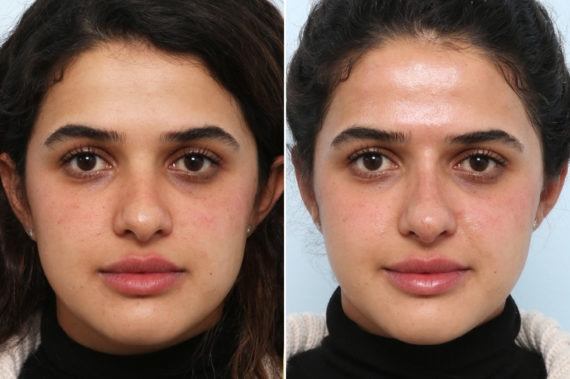
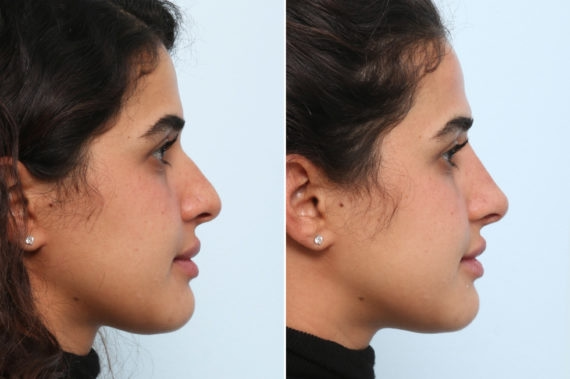
The Cons of Liquid Rhinoplasty Treatments
1. Unrealistic Expectations From Some Liquid Rhinoplasty Patients
Unfortunately, some prospective patients have unreasonable expectations regarding non-surgical rhinoplasty, mostly thanks to social media and perfectly edited photos that make it difficult to distinguish between what’s real and what’s not. This often leads to disappointment because the noninvasive treatment naturally has certain limitations on what it can achieve. Some goals can only be met with surgical rhinoplasty.
2. Liquid Rhinoplasty Can Only Offer Temporary Results
The results can last between 9 to 12 months on average. Even though the reversible nature of liquid nose jobs may be a benefit to many, it may also be considered a downside by some because of the need for yearly touch-up treatments. Patients who desire permanent results should opt for traditional surgical rhinoplasty for this reason. Nevertheless, results can last as long as 2 years if there is minimal movement in the nose.
3. Nonsurgical Rhinoplasty Has a Limited Scope
The treatment does not address the reduction of nose size or correct breathing issues caused by structural problems like a deviated septum. Surgical rhinoplasties are needed to correct major nose problems needing a modification of nasal cartilage or bone, including:
- Twisted nose
- Deviated septum
- Reduction of part or all of the nose
- A bulbous tip
- Heavily plunging or drooping nose tip
- Re-alignment
Schedule Your Appointment Today
If you have concerns or questions about the appearance of your nose and wish to know if you’re a suitable candidate for non-surgical rhinoplasty, contact us at Vitenas Cosmetic Surgery in Houston, TX. Facial plastic surgeon Dr. Paul Vitenas and his staff can be reached at 281-909-7136.
